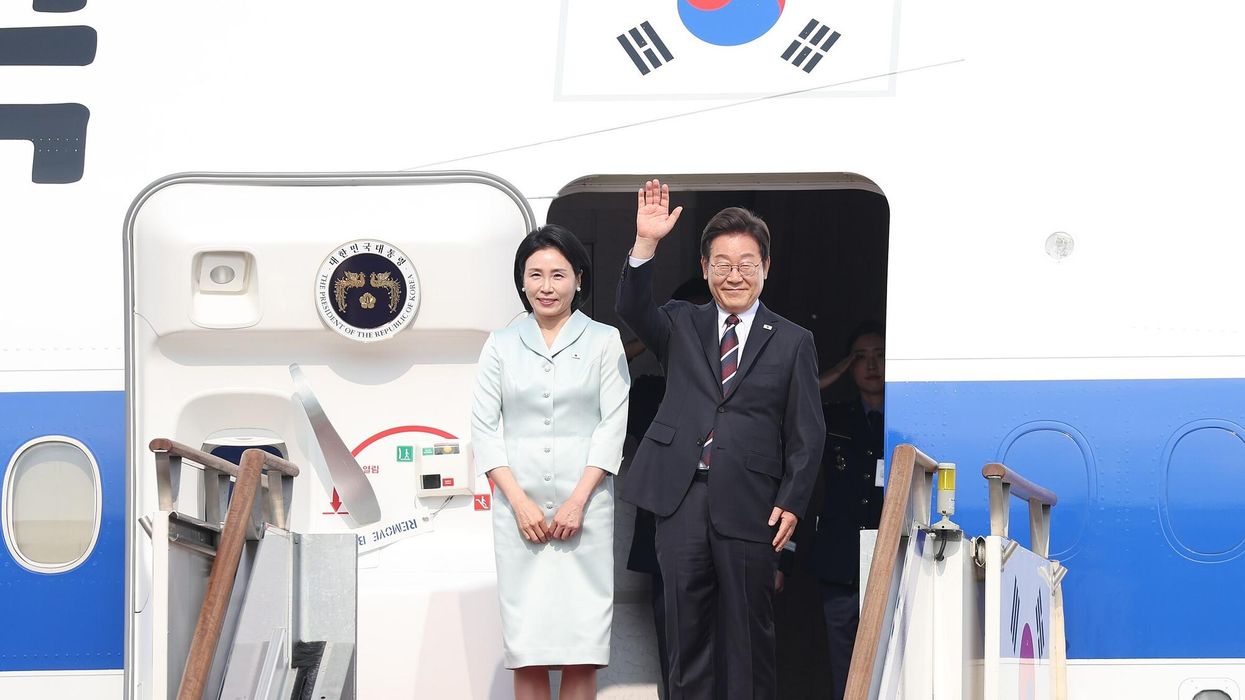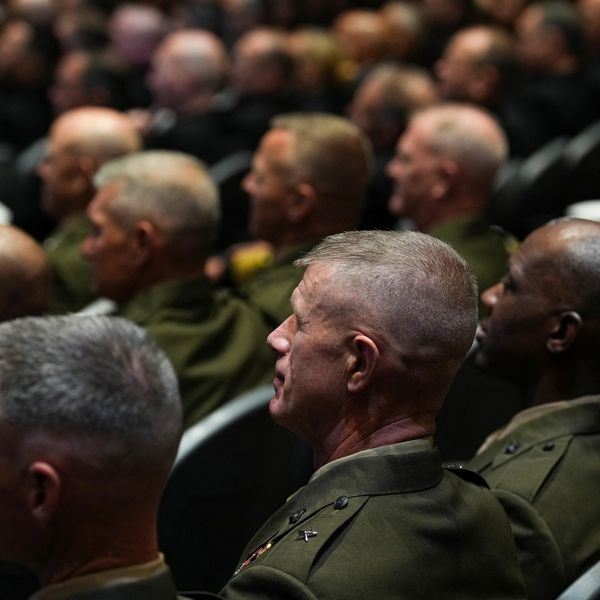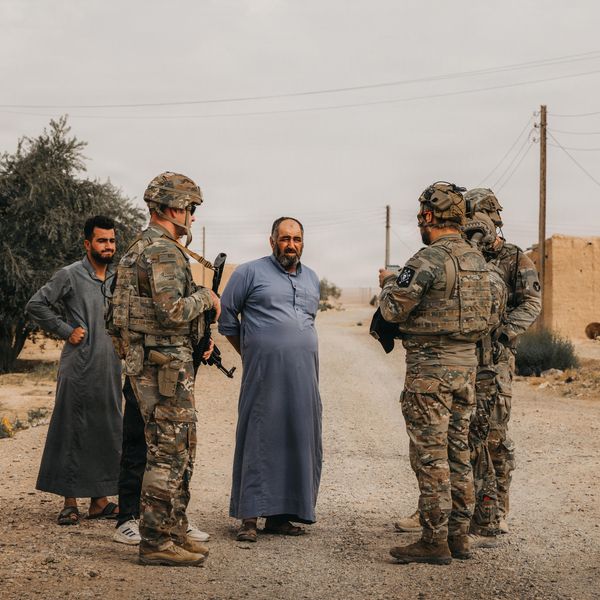This article was co-published with The American Conservative.
The conservative Heritage Foundation has consistently fought international treaties banning weapons that pose an outsized threat to civilians in the war zone. This would include anti-personnel landmines, cluster munitions, and “killer robots”---as well as regulations that would enforce arms embargoes on human rights offenders. And yet, Heritage fails to disclose a possible financial incentive for taking these positions.
Heritage received at least $5.8 million from the Hanwha Group between 2007 and 2015, according to the organization’s annual reports reviewed by Responsible Statecraft. Between 2010 and 2014, Hanwha—a South Korean conglomerate that has produced landmine and autonomous weapons systems—contributed a minimum of $1 million per year, making Hanwa one of the Heritage Foundation’s biggest donors. Hanwha was not listed as a donor after 2015, but Heritage permits donors to make anonymous contributions and Heritage and the Hanwha Group did not respond to questions about whether the funding arrangement continued after 2015.
However, Korean media regularly reports on the close relationship between Heritage and Hanwha, and suggested their friendly relationship was alive and well, at least as recently as October 2018 when Heritage Foundation founder Edwin J. Feulner and Hanwha Group Chairman Kim Seung-youn met in Seoul. This meeting was documented by The Korea Herald, a major South Korean English language newspaper. Topics discussed included: “difficulties faced by Korean businesses in the U.S., despite the successful renegotiation of the Korea-US Free Trade Agreement.”
“Feulner and the Hanwha chairman have maintained a working relationship for the past 30 years, holding regular meetings to discuss outstanding political and economic issues between the two countries,” concluded The Korea Herald article.
Heritage’s work may have proven particularly beneficial for Hanwha.
In January of that same year, an op-ed by Heritage Senior Research Fellow Theodore R. Bromund took The New York Times editorial board to task for urging the U.S. to join the Mine Ban Treaty, an agreement signed by 164 countries with the goal of eliminating anti-personnel landmines around the world. His column laid out clearly the Heritage Foundation’s positions on arms control agreements that might impact Hanwa.
“Why hasn’t the U.S. gotten rid of its land mines?” Bromund asked. “Because South Korea uses mines to defend itself against North Korea, and South Korea is an ally of ours.” He continued:
“But according to the Times, ‘given the North’s nuclear buildup, a mined DMZ seems to be a Cold War vestige of diminished value. So because North Korea has nuclear weapons, we should abandon our land mines? I’m glad the Times wasn’t advising NATO on how to defend Western Europe during the Cold War.”
That was just one of many Heritage op-eds and reports over the years attacking efforts to ban landmines.
South Korea is one of only 33 countries that has not acceded to the Mine Ban Treaty. According to the International Committee to Ban Landmines (ICBL).
“I had no clue Hanwha was giving [Heritage] money,” said Mark Hiznay, associate director of the Arms Division at Human Rights Watch. “Hanwha for a long time was only producing ammunition and weapons for the South Korean military, but that changed in the mid-2000s when they started broadening their exports.”
The ICBL’s “Stop Explosive Investments” campaign describes Hanwha as “a diversified industrial conglomerate. Its defence division makes munitions, guidance and delivery systems.” In recent years the group has “opened up to the export market, both exhibiting at international arms fairs and selling military equipment abroad.”
“Heritage hasn't been too hot on multilateral or humanitarian disarmament treaties dating back into the mid-90s, when the first efforts to ban mines start bubbling up on the international stage,” said Hiznay.
Opposing international efforts to eliminate the manufacturing of products produced by one of Heritage’s biggest donors poses a potential conflict of interest that no Heritage scholars disclosed in their condemnation of the Mine Ban Treaty. That potential conflict of interest became even more glaring when Heritage defended autonomous weapon systems, including one manufactured by Hanwha, the SGR-A1.
The SGR-A1 is an autonomous sentry designed to replace human guards on the DMZ between North and South Korea, complete with the capacity to identify humans through voice recognition and, if a person is unable to provide an access code, fire on an individual with a variety of possible weapons, including a machine gun or a grenade launcher. Activists have expressed concerns about autonomous weapons systems lowering the threshold for initiating the use of deadly force, complicating the chain of accountability, and ignoring ethical concerns that a human operator might take under consideration.
Heritage Foundation Senior Research Fellow Steven Groves, appeared to share none of those concerns in two reports published after Hanwha’s December 2014 announcement of its acquisition of Samsung Techwin, the manufacturer of the SGR-A1.
In a March 2015 report titled, “The U.S. Should Oppose the U.N.’s Attempt to Ban Autonomous Weapons,” Groves mentions the SGR-A1 in the first paragraph as an example of autonomous weapons systems currently under development, and he urged the U.S. delegation to the 2015 Convention on Certain Conventional Weapons (CCW) to, “identify nations at the CCW that are inclined to support a ban on [lethal autonomous weapons systems systems] and persuade those nations against that course of action.”
Such an effort by the U.S. delegation would have benefited manufacturers of autonomous weapons systems, such as Hanwha, whose development, sale, and potential export of systems like the SGR-A1 might be limited by such a ban.
In April 2016, Groves, again referencing the SGR-A1 as an example of an autonomous weapon system, argued for the normalization of autonomous weapons and for the U.S. and “like-minded nations” to convene a “group of experts drawn from advanced militaries, legal academia, robotics engineers, computer programmers, and ethicists” to develop a manual on how law of armed conflict principles can be applied to autonomous weapons. Groves acknowledged that such an effort goes against “the momentum in U.N. Forums and among human rights and arms control activists […] to ban [autonomous weapons], not normalize them.”
Groves did not disclose Heritage’s funding from Hanwha in either of his reports defending autonomous weapons, which included explicit references to Hanwha’s SGR-A1.
In 2017, Groves departed Heritage to serve as Chief of Staff for then-U.N. Ambassador Nikki Haley before moving to the Trump White House where he worked as an assistant special counsel. Groves’ LinkedIn profile says he “[r]epresented the White House in the investigation conducted by Robert Mueller into Russian interference in the 2016 presidential election” and later worked as deputy press secretary before returning to Heritage in June 2020.
“Neither [Bromund nor Groves were] aware of Hanwha’s donation or any relationship between Heritage and Hanwha,” said a Heritage spokesperson. “Heritage’s authority rests on the rigor, depth, and independent nature of our research and analysis. The Heritage Foundation’s broad base of more than a half-million members guarantees that no donor or group of donors has the ability to direct the views or activities of Heritage.”
Heritage did not provide a conflict of interest policy, when requested, but the spokesperson was adamant that the foundation refuses “to engage in contract research,” and “takes no money from government---whether federal, state, local, tribal, or foreign---for any research activity or any other purpose.” Heritage added that “when a potential donor specifies conditions for the use of funds to be donated, Heritage declines the donation if the conditions would compromise our research independence.”
While Heritage never mentions Hanwha in conjunction with any of its work touching on policies that could impact their donor’s business, Hanwha press releases and South Korean media regularly highlighted the close relationship between Heritage and Hanwha leadership.
Between 2012 and 2018 Hanwha published at least six press releases reporting on meetings between Hanwha and Heritage executives.
“In 2011, to thank [Hanwha] Chairman Kim [Seung-Youn] for his contribution to bilateral non-governmental diplomacy, the foundation named the conference center on the 2nd floor of the Heritage Foundation Pennsylvania Avenue Building in Washington, D.C., the ‘Kim Seung Youn Conference Center,’” said one such press release.
The Korea Herald published three articles on meetings between Heritage founder Edwin Feulner and Kim just in 2016 and 2017.
Indeed, the relationship between Kim and Feulner, who chaired the Trump administration’s transition team, may have secured Kim a special invitation to Trump’s inauguration.
“Hanwha Group Chairman Kim Seung-youn has been at the vanguard of fostering business cooperation with the United States, years before uncertainties emerged upon the inauguration of US President Donald Trump, who has expressed skepticism toward the two countries’ free trade agreement,” wrote The Korea Herald in June, 2017.
“Kim’s ties with leading business figures in the US, including Heritage Foundation President Edwin Feulner, has made him one of the rare South Korean business representatives who is able to bridge the differences between the two new administrations and seek mutual benefits.”
The paper later added, “Kim was also invited to Trump’s inauguration ceremony in January at the recommendation of Feulner.”
Neither the Heritage Foundation nor Hanwha responded to questions about whether the Korea Herald report was accurate and, if so, if Kim took Feulner up on the invitation.
While Heritage and Hanwha are not forthcoming about the details of their multi-million dollar relationship, including whether it is ongoing, several things are clear: Hanwha’s $5.8 million-plus in contributions to one of the most influential conservative think tanks in the U.S. coincided with high profile meetings between Hanwha and Heritage’s leadership in Seoul, a named conference room at Heritage’s Washington offices, and a flood of reports and analysis opposing arms control efforts that could have limited the market for several of Hanwha’s weapons products, a potential conflict of interest that Heritage never disclosed in their research products.
















